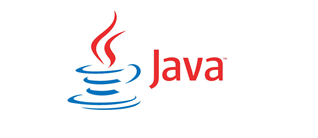Ascio Web Service v2
Java Axis UploadMessage

Response UploadMessage(string sessionId,string orderId,Message Message)Response codes
| ResultCode | Message | Value |
|---|---|---|
| 200 | OK | |
| 401 | Authorization failed | |
| 404 | Object not found |
UploadMessage Request
| Property | Description |
|---|---|
| sessionId | Example: o58t9fjgw9bjarp6q7byv13e |
| orderId | |
| message |
UploadMessageResponse
| Property |
|---|
| UploadMessageResult |
Java Axis example
package ascio.v2.examples;
import java.util.Calendar;
import com.ascio.www._2007._01.*;
import ascio.lib.*;
public class UploadMessageExample {
public static Response main() {
AscioConfig config = new AscioConfig();
V2 env = config.getTesting().getV2();
String fileContentString = "abc123";
Attachment attachment = new Attachment();
attachment.setData(fileContentString.getBytes());
attachment.setFileName("anything.jpg");
Only the extension is important and must match with the content-type
ArrayOfAttachmentAttachment attachments[] = new ArrayOfAttachmentAttachment[]{attachment};
Message message = new Message();
message.setAttachments(attachments);
message.setBody("BodyTest");
message.setCreated(Calendar.getInstance());
message.setFromAddress("administrator@ascio-test-domain.com");
message.setSubject("base64-encoded or 7 Bit ASCII");
message.setToAddress("ToAddressTest");
message.setType(MessageType.Message_to_Partner);
try {
Response response = env.getClient().uploadMessage(env.getSessionId(), "orderIdTest", message);
System.out.println("UploadMessage ResultCode\t: " + response.getResultCode().toString());
System.out.println("UploadMessage Message\t: " + response.getMessage());
if(response.getResultCode() == 400) {
for( String value : response.getValues()) {
System.out.println("Error: " + value);
}
}
return response;
} catch (Exception e) {
System.out.print(e);
}
return new Response();package ascio.v2.examples;
import java.util.Calendar;
import com.ascio.www._2007._01.*;
import ascio.lib.*;
public class UploadMessageExample {
public static Response main() {
AscioConfig config = new AscioConfig();
V2 env = config.getTesting().getV2();
String fileContentString = "abc123";
Attachment attachment = new Attachment();
attachment.setData(fileContentString.getBytes());
attachment.setFileName("anything.jpg");
ArrayOfAttachmentAttachment attachments[] = new ArrayOfAttachmentAttachment[]{attachment};
Message message = new Message();
message.setAttachments(attachments);
message.setBody("BodyTest");
message.setCreated(Calendar.getInstance());
message.setFromAddress("administrator@ascio-test-domain.com");
message.setSubject("base64-encoded or 7 Bit ASCII");
message.setToAddress("ToAddressTest");
message.setType(MessageType.Message_to_Partner);
try {
Response response = env.getClient().uploadMessage(env.getSessionId(), "orderIdTest", message);
System.out.println("UploadMessage ResultCode\t: " + response.getResultCode().toString());
System.out.println("UploadMessage Message\t: " + response.getMessage());
if(response.getResultCode() == 400) {
for( String value : response.getValues()) {
System.out.println("Error: " + value);
}
}
return response;
} catch (Exception e) {
System.out.print(e);
}
return new Response();WSDL for AWS v2
https://aws.demo.ascio.com/2012/01/01/AscioService.wsdl (OTE)
https://aws.ascio.com/2012/01/01/AscioService.wsdl (Live)
Please configure the IP-Whitelisting in the portal/demo-portal.
https://aws.demo.ascio.com/2012/01/01/AscioService.wsdl (OTE)
https://aws.ascio.com/2012/01/01/AscioService.wsdl (Live)
Please configure the IP-Whitelisting in the portal/demo-portal.